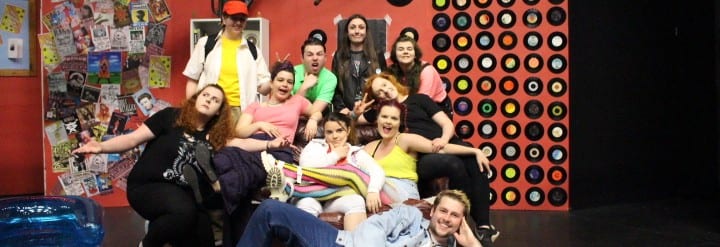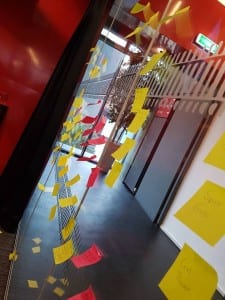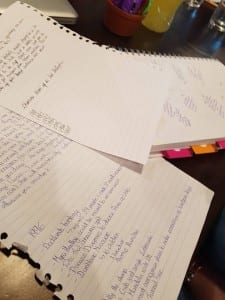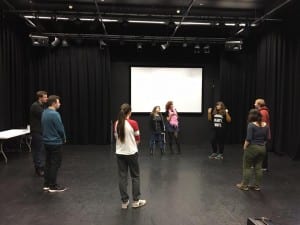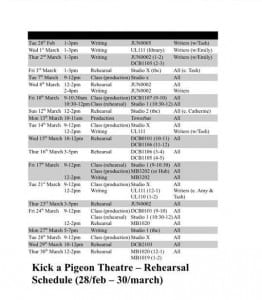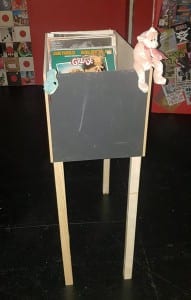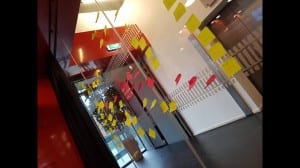After having created the backstory and a firm personality and set of characteristics for each character over the last few writing sessions, the development process with regards to the acting has become much more focused. Now that the actors all have a firm set of guidelines to work from with regards to how their character would interact with others, the process has moved from simply improvising scenes within an abstract and hypothetical world with characters that are always subtly altering depending on the whims of the actor, to beginning to improvise scenes within the world of the show that we are creating with a view to later potentially adapting them and adding them to the script.
Because not everyone in the company has performed together before working together in this module, there is still an element of the actors ‘figuring each other out’, though we are all visibly a lot more at ease and seamless with each other now than we were when the development process first began. Our individual styles of comedy have also managed to blend together so that when we are working on potential scenes and interacting with each other in character, there is a significant improvement in the interactions whereby they flow a lot more smoothly and allow us to keep the improvisation going on far longer than we could at the start of the process when we were all acting far more on our own individual wavelengths, whereas now we are acting far more as a cohesive company working towards the joint goal of making the show as good as it can possibly be.
Each actor has come up with a list of about ten bullet points for their character to keep in mind while we’re improvising potential scenes, which helps to keep us grounded to the world of the show that we are creating and also what our characters motivations are. It also in many ways allows us more freedom during these exploratory improvisation workshops since as actors we are, in a sense, permitted to be more adventurous with the scenes and the characters’ interactions since we always had a baseline of reality to help to keep the situation grounded and stop it from becoming too outlandish even when we push the characters to be as over-the-top as we feel we can make them.
